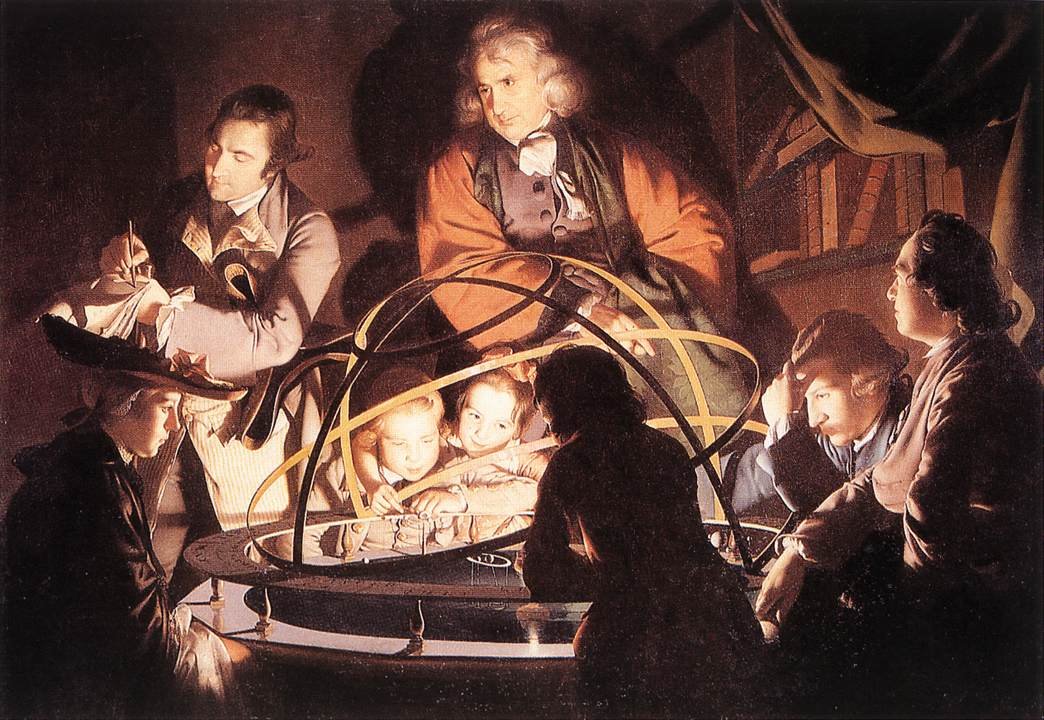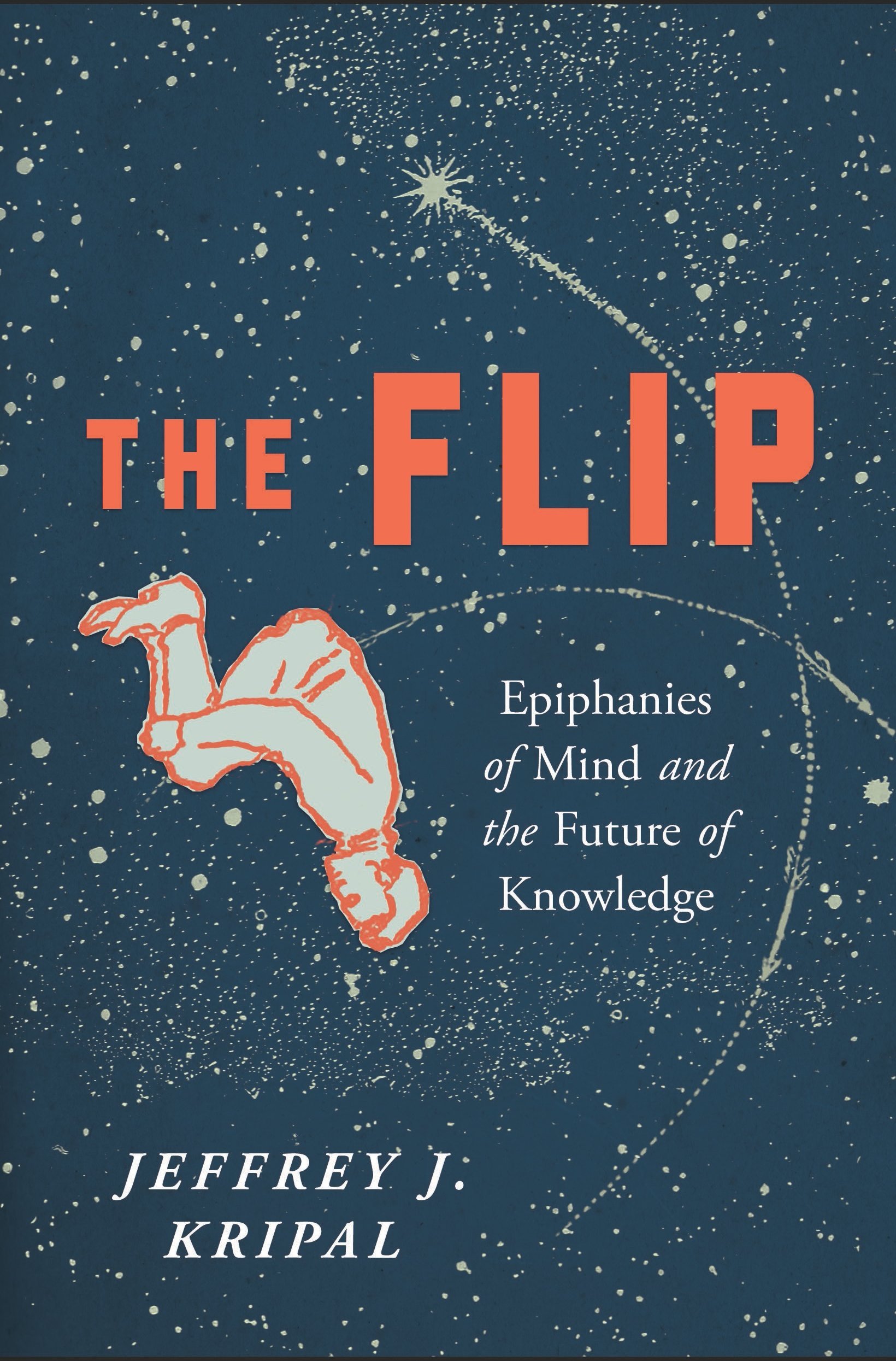Forbidden Fountain: The Shunned Source of Humanity’s Greatest Insights
Throughout the evolution of human thought, there have been periods of regular, careful, sequential progressions of knowledge, much as we tend to expect in the sciences, today. Even before science, there were always people engaging in methodical observations or arguments to push knowledge forward in some gradual way.
On the other hand, there have also always been great leaps, often made by singular individuals, which have seemingly come “out of the blue.”
These great leaps often push entire fields ahead in ways that may never have been achieved by incremental innovation.
However, these leaps didn’t come out of the blue, they came from a source of insight that has become considered taboo in modern academic culture, especially the sciences. In fact, some of the greatest discoveries and breakthroughs to which the culture and ideology of science tends to claim for its own came not from the methodical forward motion most people in the sciences value most, but in fact came from this spontaneous, and now shunned source.
So, what is this forbidden fountain, which so many modern scientists and intellectuals have been taught and pressured to ignore in themselves and others?
Phenomenology of Epiphany
If we’re trying to understand how insight works, a good starting point is to listen to the descriptions of people who had major, significant insights. What was it like? The investigation of the subjective description of experiences is known as phenomenology, so what is the phenomenology of epiphany?
Across the board, we see a common story: a great thinker in their field is struggling with a difficult problem, hitting a wall in their normal analytical process, and then at some point, often after taking a break of allowing their mind to relax, they say that the insight “just came to me.”
In other words, when they “stopped thinking about it,” or at least stopped thinking about it in the way they had been, the answer somehow emerged in their mind, almost as if by magic. This has also been referred to as “The Eureka Effect.”
For instance, mathematician Friedrich Gauss is said to have described a eureka moment in these terms: "I have the result, only I do not yet know how to get to it."
Many other classic examples of this exist, such as Sir Isaac Newton realizing gravity from seeing an apple fall from a tree, Mendelev seeing the periodic table of elements in a dream, or Einstein realizing the basic premise of the theory of relativity when daydreaming about a streetcar traveling from a clock tower at the speed of light.
So, clearly the source of insight is not necessarily the normal, methodical way of thinking we normally employ in problem-solving. What is it, then?
One Brain, Two Minds
In many ways, human cognition is still inadequately understood. Putting aside the bigger questions like the Hard Problem of Consciousness, even relatively simpler matters such as how we come to conclusions or gain insight are far from settled knowledge in the fields of psychology and neuroscience. Granted, neuroscience is the study of the most complex thing in the known universe, so we shouldn’t be too surprised it still finds many things baffling, but it’s important to be aware of its limitations.
Psychology has, of course, developed theories. One theory that I think is fairly powerful is dual-coding theory.
The reason I like dual-coding theory is that it matches our experience. You can simply reflect on the nature of your own mind, and see that essentially, dual-coding theory is a relatively accurate description.
The essence of the dual-coding theory is the idea that we have two minds: an image-based mind, and a language-based mind.
Again, if you simply reflect on your own mind, you can see that this is true. All of your memories, all of your concepts and ideas, pretty much everything that goes on in your mind is composed of images and language, more or less. If you want to be a stickler, you might say, “It’s not just images, it’s sounds and feelings; it’s not just language, it’s numbers and mathematics, too.”
Another, more all-encompassing way of describing these would be experiential forms (to include sounds, tactile experiences, etc.) and symbolic forms (to include numbers and anything else abstract). Or, to be simpler, we can say imaginal mind, and abstract mind.
The Master and His Emissary
by Iain McGillchrist
Iain McGilchrist presents a fascinating exploration of the differences between the brain’s left and right hemispheres, and how those differences have affected society, history, and culture. McGilchrist … takes the reader on a journey through the history of Western culture, illustrating the tension between these two worlds as revealed in the thought and belief of thinkers and artists from Aeschylus to Magritte.
The theory goes that the imaginal mind is the first and primary type of mind that emerged in evolution, and that we share with animals. If you think about it, this makes sense; just about any animal you think of, we assume, probably has some type of internal image of their world, and how they operate within it, including memories of places and previous experiences, etc.
These more concrete mental phenomena are referred to in dual-coding theory as “analogue codes.” In other words, they are direct imprints of experience, and in our case, with imagination, manipulations in the same language of direct imprints, like images and sounds.
The abstract mind, on the other hand, emerged relatively recently, and mostly in humans (with the exception, arguably, of a basic form of abstract mind in animals who have rudimentary language, like dolphins). It consists of abstract mental phenomena, whose only purpose is to refer to something else.
In other words, every word is not about the literal shapes of the letters, or sound of the word, but is about that to which the word refers, or that which it describes, which is always ultimately a more direct imprint, or aggregation of many imprints.
The word “tree,” for instance, isn’t about the shapes of the letters, it’s about the usually green and brown, branching, sunlight-eating, rooted-in-the-ground things we all know through our experiences of them. The many many trees we have seen and experienced in our lives, through direct imprints or imaginal mind, are aggregated into a single construct, which we label (arbitrarily) with the letters and mouth-sound, “tree.”
I say arbitrarily, because it could have just as easily been any other word. If for whatever reason we in the English language had come to refer to trees as “glorks” and had used that word for them our whole lives, it would have the exact same “meaning,” or collective, analogue image structure in our imaginal mind, to which it refers.
These more abstract mental phenomena whose only purpose is to refer to something else are referred to in dual-coding theory as “symbolic codes,” as opposed to analogue codes.
From this point forward, I’ll discuss my own ideas about the imaginal and abstract mind, which may or may not correlate with what psychological researchers have said about them.
The fundamental purpose of the abstract mind is to code and organize the content of the imaginal mind.
Again, you can reflect on this, and see that it’s true. The whole point of talking to each other is to try to recreate in one another’s minds the images that we have in our own mind.
If I tell you that the bus station is around the corner and two blocks down the street, the point is to create a rough map in your mind of a physical location and the path to get there. My words operate symbolically, using the abstract mind, but their ultimate goal is to utilize analogue codes we share, such as the image of “street” and “corner,” to ultimately provide you with useful mental images that will help you find your way.
We can also see this clearly in the way that we originally learned words, numbers, and basic math. When we were being taught the difference between 2 and 3, we were shown 2 apples, and 3 birds, or something like that. We were shown concrete images of numbers, and taught to associate the how-many-ness of these images to the abstract symbols of the numbers.
The same holds true even for more abstract concepts. If I tell you that “What is wrong is a matter of what is harmful,” the imaginal content this refers to may be more various and complex than if I said “The apple is red,” (which would call up a fairly simple image, by comparison), but I would argue that it does consist of complex systems of images, none-the-less.
The actual mouth-sounds or word-shapes “wrong” and “harmful” are only meaningful inasmuch as they refer to some associated experiential forms, images, or imaginal content. Even if there is no central, archetypal image for “wrong” as there is for “tree,” it is nevertheless referring ultimately to some set of analogue imprints, which probably consist of feelings of wrongness, images of stories of wrongdoing we have known, etc.
You may object that you have no specific images in your mind when you hear the word “wrong,” however, I would argue that even a general feeling of wrong-ness is itself more an “analogue” mental content than an abstract/language code. It is an analogue code of the bodily perception of an emotion, or perhaps a set of multiple related emotions.
Thinking At the Speed of Images
One thing that is recognized in dual-coding research is that what I’m calling the imaginal mind here operates much more quickly and efficiently in many ways than the much slower and more methodical abstract mind.
It’s easy to see why this might be the case. For one thing, imaginal thinking has been around since possibly the beginning of life, or at least early in the evolution of animal life. It’s how worms navigate the soil, how birds remember migration patterns, how predators understand the behavior of their prey, etc. It’s the default mental operating system for all of Life.
Abstract mind, on the other hand, is new, and relatively cumbersome. It’s not immediately obvious that 25 divided by 5 + 5 equals 10, unless you’ve already gone through a complex process of learning and memorization of various symbols, and those analogue images to which they refer.
To even understand the concept of a number like 10, when you were a small child, you had to be shown ten objects of various kinds, to make the connection: 10 bananas, 10 chickens, 10 cars, etc. until you finally understood that it was the number of them, and not the things themselves, that was what “ten” was referring to.
A similar, progressive connection had to be made for multiplication and division, and then the order in which to perform multiplication vs addition in the same computation, etc. After all that, you could perform the calculation 25/5+5=10.
This is probably why mathematics is so difficult to so many people, because as layers of abstraction are added, you are deeper and deeper in a world of content which has no meaning other than to refer to other content, which refers to other content, which refers to other content, etc. until at some point, hopefully, it refers to something that you can actually imagine as a real thing, in an imaginal way. Although ultimately quite useful for solving complex problems, this is not a natural or intuitive process.
In fact, what we mean by the word “intuitive,” when we’re saying it in a non-magical way, is specifically to describe something that we can easily imagine, or that makes sense to our imaginal understanding, or fits within our existing image-model of how the world works. When something fits in our image-model, we say it has “intuitive” appeal.
Suddenly, I could see it!
At this point, you’re probably already guessing where I’m going with this. Understanding dual-coding theory may be very helpful in understanding why eureka moments happen, and why they tend to happen at seemingly random times, when not engaged in normal problem solving.
The idea that the imaginal mind is instrumental in insight is evidenced by psychological research, which has indicated via fMRI that problem solving activities that require insight correlate to greater activity in the right hemisphere of the brain, which is probably where most of the imaginal processing is going on, based on what we know about the brain hemispheres.
On its surface, this seems uncontroversial, even intuitive. It makes perfect sense, right down to the language used to describe it: “in-sight,” or the common expression, “Suddenly, I could see it.”
However, a problem emerges from the fact that this understanding conflicts with some deeply held cultural and ideological notions about science.
Note that it does not necessarily conflict with the methodology of science itself, but with people’s cultural values around science, and all the associations that that has.
It seems that in culture and discourse within and around science, there is an emphasis on the wonders of the rational, abstract, methodical approach to problem solving, which is not surprising, given the nature of the scientific method. This is probably also connected to a much broader overvaluation of the rational intellect and abstract thought by Western enlightenment ideology.
Individuals who identify with scientific and enlightenment values generally derive personal meaning from being no-nonsense, “rational” people, who aren’t given to flights of fancy, or at least don’t take them to be real. A firm sense of what is truly valid knowledge, logical ideas, and generally solid thinking provides them with a sense of self-worth, in contrast to ways of thinking that are considered more “superstitious,” unclear, fanciful, or emotional.
Because of this, there is often a de-emphasis on the role of the imaginal mind, the insights it can provide, and especially the fact that it can solve problems that the abstract mind and it’s more rigid methods often can’t. I believe that this bias is prevalent in the sciences, in academia, and in secular culture in general.
One point of evidence that this is the case is that many thinkers who had “eureka moments” only revealed that such was the case many years after their success became well-known. Why did they hesitate to tell the story of how insight came to them?
Most likely, for the same reason that many scientists conceal their much more metaphysical or “supernatural” interests, often until they are retired and can speak openly, a phenomenon explored in Jeffrey J. Kripal’s study of scientists opening their minds to greater realities in his book, The Flip.
The Flip
by Jeffrey J. Kripal
A “flip,” writes Jeffrey J. Kripal, is “a reversal of perspective,” “a new real,” often born of an extreme, life-changing experience. The Flip is Kripal’s ambitious, visionary program for unifying the sciences and the humanities to expand our minds, open our hearts, and negotiate a peaceful resolution to the culture wars. Combining accounts of rationalists’ spiritual awakenings and consciousness explorations by philosophers, neuroscientists, and mystics within a framework of the history of science and religion, Kripal compellingly signals a path to mending our fractured world.
I think that the reason so many scientists are afraid to reveal the intuitive source of their insights, as well as their more intuitive worldviews or explorations of consciousness, is precisely the ideological bias I described above. Not that these scientists in particular have the bias, but because they know most of their peers do, and they fear the consequences for their career, or their work being taken seriously.
Yet the evidence certainly indicates that using our imaginal mind has led to some of the greatest breakthroughs in scientific history, which means that by continuing the bias against it, we are neglecting or even suppressing one of our most powerful sources of advancement in scientific knowledge - the forbidden fountain of intuitive insight, of allowing the imaginal mind to take great leaps and find solutions to our toughest problems.
Why? Why do we have this bias? It’s a topic that requires deeper research and exploration, but my hunch is that it has to do with the ideological war between science and religion that has been raging since the Middle Ages.
Long ago, science aligned itself with an ideal of pure rationality and no-nonsense thinking, with the primary nexus of “nonsense” being located in religion, of course.
Today, we might add ideas broadly derided as “woo” to the shunned nonsense, alongside religion. Anything that cannot be absolutely proven by the highest standards of evidence accepted by the rational intellect must be fanciful flights of the imagination, not because they truly have zero value from an objective standpoint, but because to open the door to such speculative ideas would be to let in the tide of nonsense we’ve only just narrowly bulwarked out of the intellectual domain, and risk another “dark age.”
This is not to say that the concern of the more methodical thinkers is unfounded. It is entirely possible for the imaginal mind to run wild with its speculations, to “see things” that aren’t there, to imagine forces and presences in nature that may not be real. But does that mean we should shun it so harshly? Isn’t this just a classic case of tossing out the baby with the bathwater?
Ironically, the source of religious, spiritual, and “woo” ideas is the very same source of the greatest scientific insights, the great leaps of discovery which science so proudly proclaims as its own. When will this contradiction be acknowledged? When will we learn to value that fountain of insight once again, no longer forbidden, and let its waters carry us to a brighter future?









